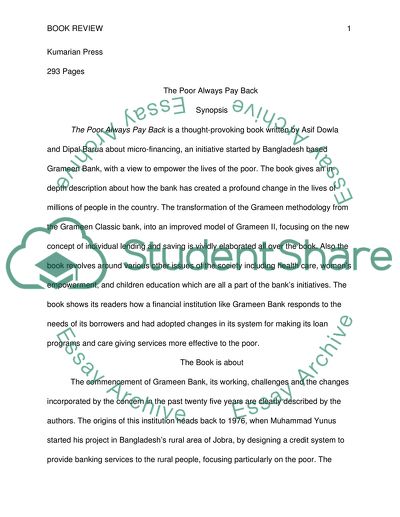Cite this document
(The Poor Always Pay Back Book Report/Review Example | Topics and Well Written Essays - 1500 words, n.d.)
The Poor Always Pay Back Book Report/Review Example | Topics and Well Written Essays - 1500 words. Retrieved from https://studentshare.org/sociology/1793819-book-review-on-the-poor-always-pay-back-by-asif-dowla-and-dipal-barua
The Poor Always Pay Back Book Report/Review Example | Topics and Well Written Essays - 1500 words. Retrieved from https://studentshare.org/sociology/1793819-book-review-on-the-poor-always-pay-back-by-asif-dowla-and-dipal-barua
(The Poor Always Pay Back Book Report/Review Example | Topics and Well Written Essays - 1500 Words)
The Poor Always Pay Back Book Report/Review Example | Topics and Well Written Essays - 1500 Words. https://studentshare.org/sociology/1793819-book-review-on-the-poor-always-pay-back-by-asif-dowla-and-dipal-barua.
The Poor Always Pay Back Book Report/Review Example | Topics and Well Written Essays - 1500 Words. https://studentshare.org/sociology/1793819-book-review-on-the-poor-always-pay-back-by-asif-dowla-and-dipal-barua.
“The Poor Always Pay Back Book Report/Review Example | Topics and Well Written Essays - 1500 Words”, n.d. https://studentshare.org/sociology/1793819-book-review-on-the-poor-always-pay-back-by-asif-dowla-and-dipal-barua.


